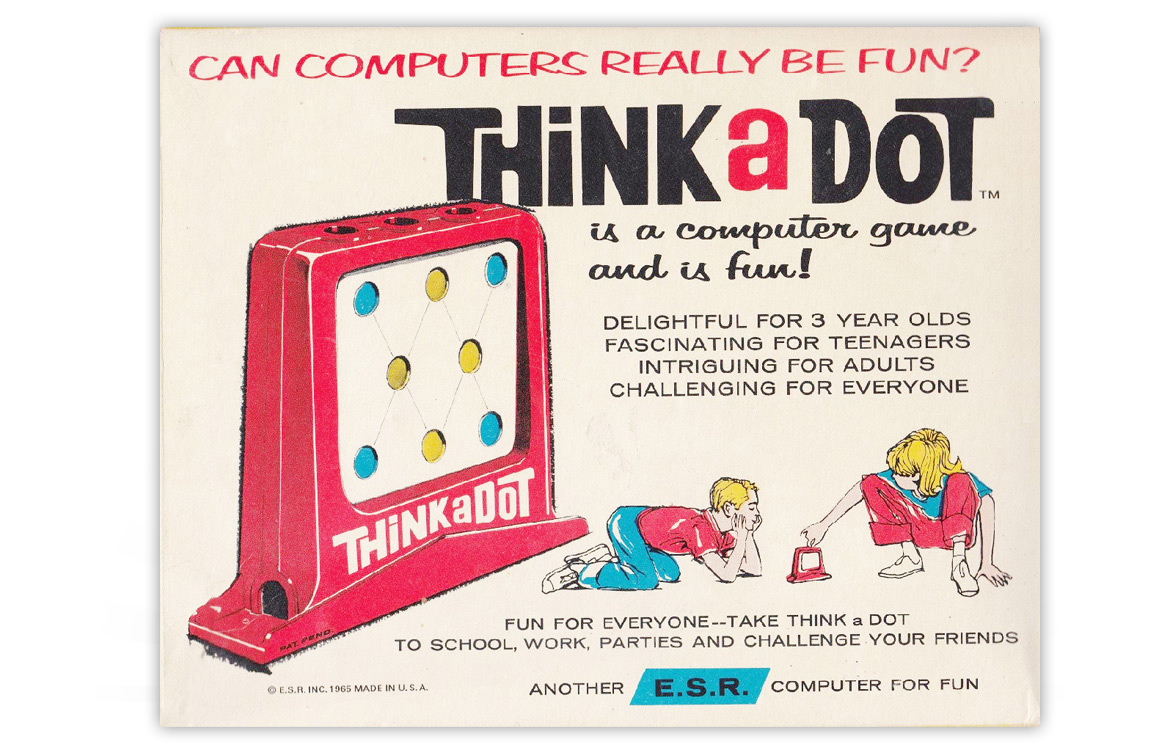“You don’t have to think-a-lot to play think-a-dot (unless you really want to)!”
Think-a-Dot from New Jersey-based E.S.R. was an educational toy that gave players insight into the fundamental components used to process and store information in a computer: the “flip-flops” or “gates.” The toy was one of several creative playthings the company designed to present fundamental principles of computers that were easily understood by children.
Think-a-Dot had a colourful, upright plastic frame with three circular openings at the top through which marbles were dropped. As each marble moved through the game, it triggered one of the eight dots or ,“gates”, at the front of the game to turn either blue or yellow until it emerged out of the bottom. Each gate would, in turn, determine the path of subsequent marbles, deflecting them either right or left depending on the colour of the gate and then flipping it over to the other colour as it passed through it.
This visual representation was an apt metaphor for a basic memory element in a computer used to store a single bit of data (either a 0 or a 1.)
Computer Science concepts aside, the gameplay was simple. Players started by tilting the game to the right or the left, resetting all the gates. From there, a target pattern of dots was chosen with the goal of matching it with the fewest number of marble drops.

